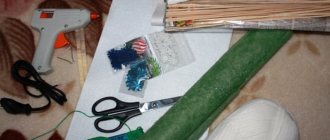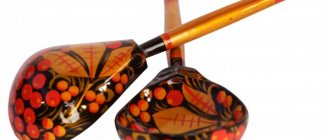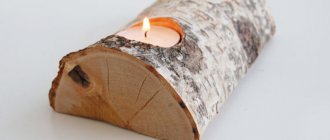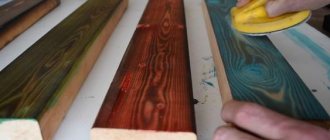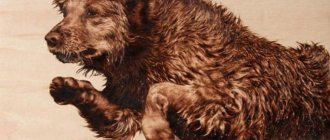The genus willow belongs to the Willow family. Distributed in North Asia, the Caucasus, and Europe. In Russia, Willows are widespread in the central part. The genus Willow has about 550 species.
Depending on the species, willow grows from 10 to 30 meters in height. The trunk can reach 1 meter in diameter. The average diameter of a willow trunk is about 50-60 cm. The bark of the tree trunk is dark gray in color. As a rule, vertical cracks are located along the bark of the trunk.
Willow grows in mixed forests, along the banks of rivers and lakes. Willow can grow in almost any soil. But loam, loose and moderately moist, suits it best.
Lumber
Willow. Properties of wood
Willow is a soundwood species, the sapwood is narrow and light brown. The kernel is uneven in color, mostly reddish-brown. The transition from the core to the sapwood does not have a clear boundary. The annual layers are clearly visible in the section. The heart-shaped rays are indistinguishable.
The density of willow wood is about 450 kg/m3, a density indicator comparable to linden or birch wood. Willow wood does not hold fasteners well, much like poplar
When dried, willow wood may crack, but will not warp. It has average resistance to splitting and has an average drying rate.
Working with willow wood is very comfortable. It is easy to process. Easy to cut and saw. Accepts stains, adhesives, and mordants well.
Due to the high content of tannins, wood (both living and cut down) when in water acquires a purple tint.
Beautiful wicker furniture is made from wood and flexible willow branches. This is especially true when the demand for eco-style in the interior is gaining momentum.
Light willow wood is used to make hives for bees, kitchen utensils, boats, tennis rackets, hoops, toys, and boxes. Also, sculptures are made from willow wood.
How to choose willow for your site
A huge selection of willow varieties helps us choose exactly the one that will best fit into our landscape and adapt to grow in the conditions of a given area. For variety, you can also plant Russian birch next to the willow.
It is better to focus on the location of the site itself and what conditions there are. It is better, of course, to plant a willow tree in an area where there are no other plantings and there is room for a new plant. Tall species are best planted within city parks and squares.
Tall trees are characterized by fast growth and smoke resistance, which is perfect for planting within residential areas. Willow is a very moisture-loving plant whose life is impossible without thoroughly moistened soil; it does not like drought. It settles well on the banks of water sources, and grows just as well in moist soil.
If you plant it on a free summer cottage, then after a while there will be no free space left at all. To do this, the tree must be constantly monitored: young shoots must be cut down.
A medium-height willow is often planted on a site, giving it a central role. After the tapeworm, lower plants surround it.
A hedge is a great option to use the plant. Among the varieties there are those that are suitable for placement in small areas and do not have to be allocated a lot of space for them. On a country pond or artificial reservoir on the site, a low-growing willow will look great - a kind of river landscape.
Willow planting
There will be no difficulties in growing and caring for your summer cottage if you follow all the rules of care. The only difficulty is the difference between widows in order to select optimal conditions for each and correctly reproduce it. Therefore, all a gardener needs is to know what species grows in his garden and find care information.
Willow. Beneficial features
Taking a decoction or infusion of willow bark or foliage has the following effects on the body:
- antirheumatic;
- antiseptic;
- diuretic;
- diaphoretic;
- astringent
Salicylic acid was obtained from the bark of this plant at the beginning of the twentieth century. Scientists have synthesized from the bark one of the most effective drugs today - acetylsalicylic acid or aspirin. In folk medicine, willow bark is actively used as an antipyretic.
Be healthy!)
Subscribe to our Yandex.Zen channel
Use of willow bark in ancient times
As you know, at the beginning of the 20th century, the imperial photographer Sergei Prokudin-Gorsky traveled throughout the Russian Empire, leaving 2000 color photographs (the negatives are in the US Library of Congress :))), playing the role of a kind of time machine, allowing you to see in convincing color what, It seems one can only imagine.
This is a different world, calm and beautiful, but both the landscapes and the realities turn out to be, unexpectedly, very familiar - the wooden town houses still stand in the same places, the bathhouses and sheds, the paths and groves have not changed. Everything seems familiar and understandable - manure transported to the field, haymaking, haystacks in the meadows. The photo shows a village near a river, presumably in the Novgorod province. And this stack is the same in appearance as a haystack, but made of something else. The caption reads “a stack of willow bark, ready for loading.” Without further explanation, as a matter of course. Clearly, of course. It is only unclear why it is needed and where to load it.
And I discovered the following: the willows that grow thickly along the banks even now were 100% used in Russia. While they were blooming, they were used by bees; willow is an excellent honey plant. The young shoots were eaten by grazing livestock, and goats were especially fond of them. And they wove baskets from branches - millions of Russian huts practically did not use IKEA storage systems - they made do with their own design creativity. But people's pragmatism did not stop there. Willow bark contains 15% tannins. What's the use of that?
And this is an excellent tannin. However, now even this is unclear to us. However, in order for the skin of a cow, pig or sheep to turn into a sheepskin coat, boots, gloves or a belt, it must be tanned. That is, clean it, make it thin, and, so as not to rot, soak it in a solution containing tannins - in the south, oak bark was used for this, from which, after drying and tying into bundles, they made *oakwood*. Like Dahl’s: “The bark is not a mallier, but the oak is gone!” In the north there are few oaks, but there are countless willows. Moreover, it grows in a year or two, and not like an oak tree. In the spring, before the rivers flooded, while there was not much work on the farm, the peasants harvested willow. And then they wove utensils, and made dublo from the bark, that is, dried and crushed them. By hand, like bread, dried in a barn and “threshed” with flails, or trampled by horses, or even in “oak poundings” arranged at ordinary mills in the Perm, Kostroma and Nizhny Novgorod provinces.
It took 5 pounds of willow oak and 5 tubs of hot water to make 50-100 sheepskins. And for a thousand years all of Rus' walked in winter in sheepskin coats, which she dressed and sewed herself, in the villages, where she later sported them. Again, the same decoction of willow bark made it possible to dye woolen fabric in brown and dark tones, so that the homespun was no longer completely shamefully gray. It could also be used to stain wooden furniture - and the wood-boring beetle would not appear, and the color would become a noble reddish-brown, “walnut-like.”
High urban fashion also needed a double. For the status was emphasized not only by a sable hat and fur coat with gold buttons, but also by green or red boots made of yuft or morocco (from the same morocco, for example, book bindings were made). And no good leather can be obtained without tanning. In the 17th century, when growing European trade and industry began to look around in search of cheap raw materials, the golden age of Russian tanning began. Having received the secrets of craftsmanship from the masters of Central Asia and the Golden Horde, the Russians gradually achieve both high class and acceptable low prices in this business. As a result, “yuft” and “leather”, along with flax, hemp and lard, become goods for the export of which a state monopoly has been established. Like gas now. In 1664, the monopoly was abolished, instead increasing duties (and this is like on oil :)).
The size of domestic consumption of oak from willow *bark* or *crust* is unknown, but, for example, at the end of the 19th century. More than half a million poods were imported into St. Petersburg annually. Doubles were also exported abroad, but not much - about 50,000 poods per year. The rise in prices for dublo was counteracted by substitutes for plant tannins—mineral surrogates based on chromium—that were actively used since the 1880s in Europe for tanning.
In the USSR, as we remember, there were no decent shoes and sheepskin coats. But there was GOST 6663-74 “Korye for the production of tanning extracts,” developed by the Ministry of Forestry and in force from 1975 to 1995. What now? I don’t know, but I didn’t see stacks of willow bark along the banks.
Recipes of modern traditional medicine
Willow bark in gynecology (for uterine bleeding)
- Pour 1 cup of boiling water over powdered willow bark (1 tablespoon).
- Leave in a thermos for 5-6 hours.
- Take 1 tablespoon 3 times a day after meals; for heavy bleeding - 6-7 times a day.
For heavy menstruation and menstrual pain
- Pour 350 ml of water into powdered willow bark (1 tablespoon).
- Boil over low heat for 20 minutes. Then strain and bring with warm boiled water again to 350 ml.
- Take 1 tbsp. spoon 3-4 times a day.
Willow bark in gynecology
For inflammation of the appendages
- Pour crushed willow bark (1 tablespoon) into 1 cup of boiling water.
- Leave covered for 3 hours. Strain.
- Take 1/3 of the infusion 3 times a day an hour before meals.
For general gynecological diseases
- Pour crushed willow bark (2 teaspoons) into 2 cups of boiling water.
- Leave until completely cool. Strain.
- Take ½ of the infusion 2 times a day.
For varicose veins
Method number 1:
- Brew a glass of crushed willow bark and a glass of oak bark with 4-5 liters of water and leave for 30 minutes under the lid.
- Take a foot bath from a fairly hot infusion until the water cools to room temperature.
Method number 2:
- Brew a glass of crushed willow bark with 3 glasses of boiling water.
- Leave for 40-50 minutes covered.
- Pour the infusion into a basin with 5-6 liters of hot water.
- Take a foot bath until the water is warm.
Method number 3:
- Brew a glass of crushed willow bark with 7-8 liters of boiling water.
- Leave covered for 30 minutes. Cool to a tolerable temperature (not too hot!)
- Make a foot bath from half the infusion. Keeping your feet in the bath, pour the remaining infusion over them in portions until the water cools down.
- Immediately dry your feet, put on warm socks and go to bed.
- The course of treatment is 3 weeks. Can be repeated after a 3-day break.
General strengthening agent, prolongs life and improves its quality
Method number 1:
- Mix 1 teaspoon of willow pollen with honey; Dissolve the mixture in 2 glasses of warm water.
- Mix well and cool.
- Drink in 3-4 doses. Take courses for two weeks. 3-4 courses per year.
Method number 2:
- Pour 1 cup of boiling water over powdered willow bark (1 tablespoon).
- Leave covered or in a thermos for 1.5 hours. Strain.
- Take 1 tablespoon 2-3 times a day after meals.
Anti-thrombosis
- Pour crushed willow bark (150 g) into 0.5 liters of vodka.
- Leave in the dark for 30 days, shaking occasionally.
- Take 35 drops 3 times a day for 15 days.
For occasional headaches
- Pour powdered willow bark (1 teaspoon) into a bowl of hot water (not boiling water!).
- Leave for 10 minutes covered. Then strain.
- Cool to room temperature and drink the entire infusion before eating.
For chronic headaches
- Pour powdered willow bark (1 tablespoon) into a bowl of hot water (not boiling water!).
- Leave for 2 hours covered at room temperature (20-220°C). Then strain.
- Take 1 tbsp. spoon of decoction before meals 5 times a day. The course of treatment is 30 days.
The healing properties of willow bark
Febrifuge
- Pour crushed willow bark (1 tablespoon) into a bowl of hot boiled water (not boiling water!).
- Simmer for 15 minutes in a water bath; then cool and strain.
- Take 1 tbsp. spoon 3 times a day before meals.
Willow bark has healing properties for sweating
- Pour 350 ml of water into willow bark (1 tablespoon).
- Boil for 15 minutes. Strain. Add warm water to 1 liter.
- Take a foot bath with willow bark decoction for 10 minutes.
Skin diseases, wound treatment
Sprinkle bleeding wounds, irritations, and ulcers on the skin with powdered willow bark powder. Additionally, take 1 g of powder after meals.
Rheumatism, joint diseases
- Pour powdered willow bark (1 tablespoon) into a bowl of hot water (not boiling water!).
- Simmer for 30 minutes in a water bath.
- Strain the hot infusion and then, adding boiled water, bring the volume back to 250 ml.
- Take 1 tbsp. spoon 3 times a day before meals.
Cleansing oily, porous skin
- Pour 1 liter of hot water over willow bark (1 tablespoon); let cool a little.
- Cover your head, while also covering the container with the infusion, with a towel.
- Hold your face over the steam for 5-7 minutes.
- Then wash your face with cool water and apply a moisturizer for oily skin to a slightly damp face.
To strengthen hair
- Pour 100 ml of vodka over willow bark (1 teaspoon).
- Leave for 3 weeks, shaking occasionally.
- Dilute 1 teaspoon of infusion with 10 teaspoons of water and moisten a cotton swab with this solution.
- Rub the composition into the scalp with a moistened swab 30 minutes before washing.
For diarrhea (diarrhea)
- Pour 450 ml of water into powdered willow bark (1 tablespoon).
- Boil for 20 minutes over low heat.
- Strain the broth and bring with boiled water again to 450 ml.
- Take 1 tbsp. spoon 3 times a day before meals.
What you need to know when using traditional medicine recommendations
Folk remedies, in most cases, do not give quick results. Only their rather long-term systematic use is effective.
It is most advisable to use them for prevention and avoid use during exacerbation of chronic diseases.
- You can prepare medicinal raw materials from parts of the willow tree yourself. There are proven technologies for collecting, preparing and storing medicinal plant materials.
- In the modern world, all components for the production of medicinal products according to traditional medicine recipes can be bought at the pharmacy.
Variety of species
All willows can be divided into large ones - for large areas and for small gardens, as well as low shrubby types.
Large size - willows for parks and large gardens
Golden willow "Chrysocoma" (Salix x sepulcralis 'Chrysocoma')
This tree has a wide, dense and regular crown. The branches are long, slender and drooping. It is not an independent species and is a hybrid of the Babylonian willow and our native white willow (Vitellina variety) from China. Golden-haired willow is a large, impressive tree with a spreading crown and yellow-barked shoots hanging down to the ground.
White or silver willow (Salix alba) and brittle willow (Salix fragilis)
They can be found along roadsides, ditches, and in meadows. They are usually large and look very picturesque. This is a beautiful, magnificent tree with a wide crown.
Brittle willow is a medium-sized tree, reaching a height of up to 20 meters, with an exceptionally wide, dome-shaped crown and a short trunk growing up to a meter in diameter. It has dark brown bark and fairly thick branches. The leaves are thin, lanceolate and grow up to 16 cm in length. Their upper parts are shiny and dark green, while their undersides are blue-green. A characteristic feature of this willow is its soft and brittle wood. Hence the name. In spring, the tree is covered with yellow-green flowers.
Botanical description and distribution of white willow
White willow (Salix alba) also has other names - silver willow, broom, willow and willow. The name of the genus, translated from Celtic, sounds like “growing near water ,” referring to the characteristic location of willow. White willow is a tree up to 30 meters high, and its trunk can grow one and a half meters wide. Its dark gray, thick bark is riddled with cracks. The crown configuration is oval or round. The leaves are elongated and narrow with a slight pubescence below. The shoots are very flexible and long. Catkin flowers appear in mid-spring and attract large numbers of pollinating insects. The roots of this tree are lateral, occupy a large area, and the depth of their penetration depends on the nature of the soil. In conditions of high humidity it reaches three meters.
This species easily lends itself to hybridization, more often spontaneously, losing many of its characteristic differences. It grows along bodies of water, often forming thickets and large groves. Its neighbors are often poplar, alder, elderberry or other varieties of willow. White willow is widespread throughout almost all of Europe (except the north), Asia and northern Africa.
Contraindications and harm to the plant
Vetla preparations cannot be combined with aspirin, because it enhances the effect of the salicylates present in them. In addition, it is prohibited to use them:
- For allergic reactions to aspirin.
- Ulcer sufferers and those suffering from gastrointestinal tract pathologies.
- Children under 16 years old.
- Together with anticoagulants to avoid bleeding.
- In the treatment of seizures, the use of certain painkillers.
- With high blood pressure.
They should not be used uncontrollably by breastfeeding and pregnant women, patients taking other medications. These drugs are also not compatible with alcohol.
When is willow bark collected?
Most often, it is the bark that is used for medicinal purposes, and a little less often the leaves. Early spring is suitable for harvesting bark. Infusions and decoctions are prepared from it for therapeutic and prophylactic effects on various diseases.
Willow bark has many medicinal properties and contraindications, so before using this product, you should make sure that it is harmless to the body. Raw materials for the treatment of certain diseases are collected from trees that have already reached the age of 6 years.
Harvesting willow bark has some nuances that many people do not know about. You shouldn't collect medicinal raw materials from all the trees you find. This process negatively affects the growth of willow, so it is advisable to make preparations in moderation. This will preserve the population of trees in a particular area, and therefore you will always have the opportunity to collect a new batch of the remedy.
Meaning and Application
For a long time, willow has been of great importance in human life, and it is used in a variety of areas of life. In ancient times, this plant was a symbol of longevity and health. However, a small part of the peoples considered the willow to be a symbol of tears and sorrow.
Application of willow:
- In alternative medicine. The plant is used to make tea, which is used for headaches, fever and rheumatism. This drink is also considered useful for problems with the gastrointestinal tract.
- The twigs of this tree are used to create wicker patterns, baskets and other decorative items.
- Wood can be used as fuel or building material.
- Willows help strengthen river banks, protect slopes from landslides, and so on.
- Some gardeners believe that if this tree is planted in depleted soil, then after some time crops that are more demanding on the soil composition will grow well next to it.



